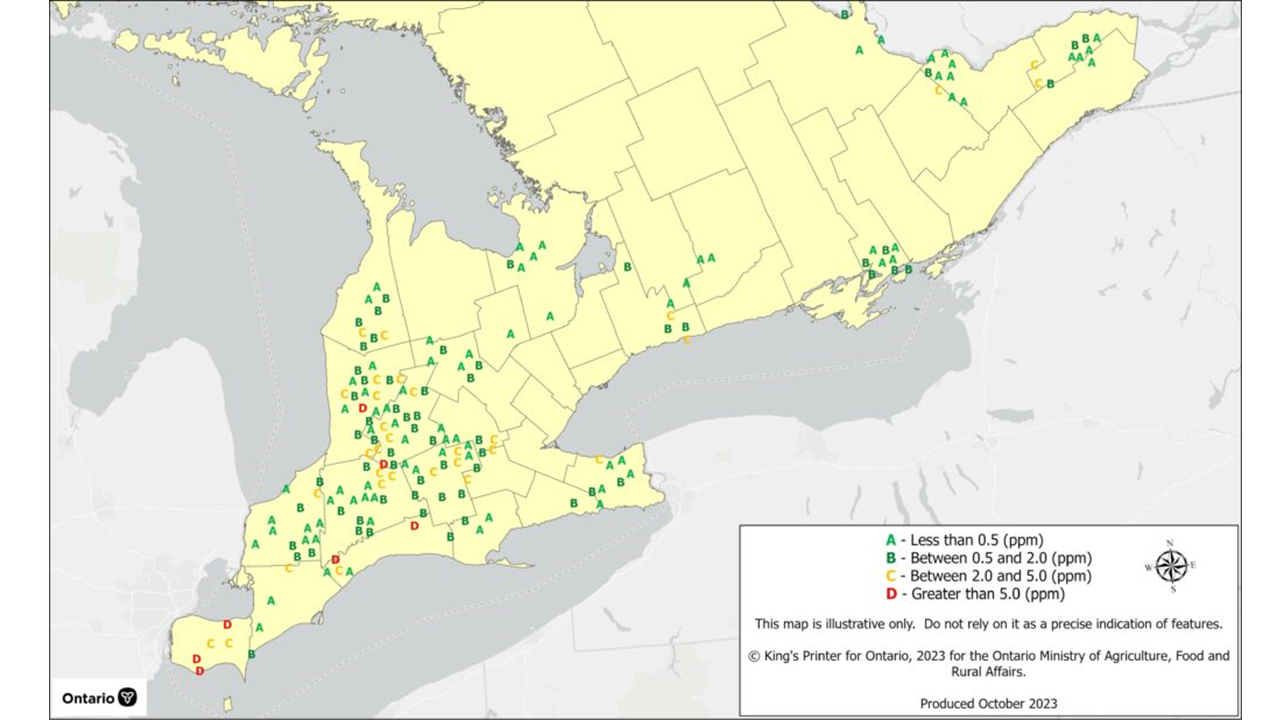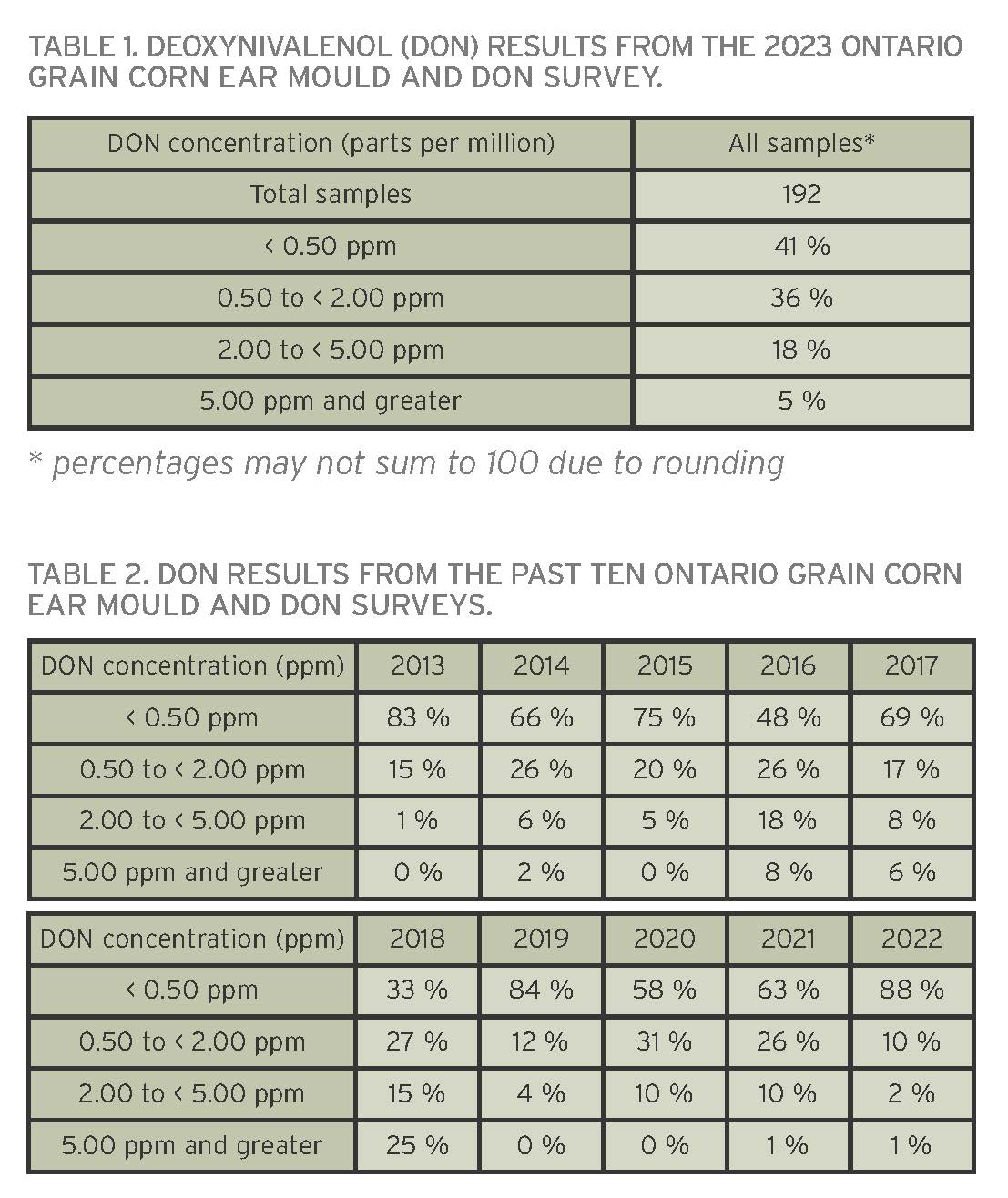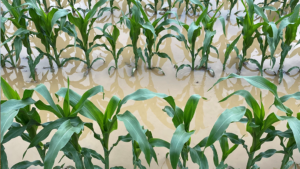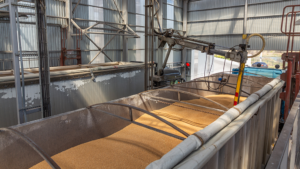2023 DON survey
AGRONOMIC INFORMATION FROM ONTARIO'S CROP SPECIALISTS

OMAFRA FIELD CROP specialists, in collaboration with Grain Farmers of Ontario and members of the Ontario Agri-Business Association (OABA), released the results of the annual Ontario corn ear mould and DON mycotoxin survey at the end of October. Corn ear moulds such as Gibberella and their corresponding mycotoxins occur every year in Ontario. These mycotoxins, particularly deoxynivalenol (DON, also referred to as vomitoxin), are produced primarily by Gibberella/Fusarium ear moulds and can be disruptive when fed to livestock, especially hogs. The 2023 survey found 77 per cent of samples tested low (<2.00 parts per million (ppm)) for DON. This is lower than the 10-year average of 88 per cent, but better than recent higher-testing years of 2018 and 2016.
RESULTS


While there were many clean samples, more samples than normal displayed some background level of ear mould. DON concentrations were higher than long-term survey averages (Table 2). There also appeared to be a slightly greater incidence of insect-feeding damage in the 2023 survey. As is usual in a year conducive to ear mould establishment and growth, these samples were associated with greater visual ear moulds. Many mouldy samples had no ear damage, however, suggesting weather and hybrid susceptibility were still primary factors for fungal infection.
MITIGATING DON IMPACT
Preventing ear rots and mould can be difficult since weather is critical to development, but there are a few things to consider for 2024. Hybrid selection is important, and while tolerant hybrids are available, none have complete resistance. Farmers are encouraged to discuss ear mould tolerance with their seed supplier. The Ontario Corn Committee has initiated inoculated DON trials for evaluating differences in DON susceptibility across Ontario hybrids. Crop rotation may help reduce ear rots, while certain foliar fungicides are also registered for suppressing ear rots but need to be applied at VT/R1 when silks are green. Cultural practices such as tillage are shown to have limited success in preventing ear and kernel rots.
The full report of the 2023 Ontario Grain Corn Ear Mould and Deoxynivalenol (DON) Mycotoxin Survey can be found at www.fieldcropnews.com. •









